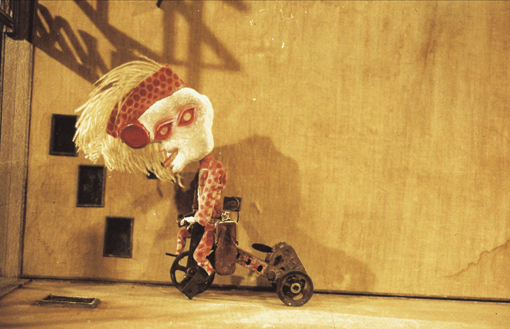Studying Experimental Film and Video
Studying Experimental Film and Video
William Fowler, Curator of Artists’ Moving Image for the BFI, looks at some of the wide variety of resources available to those studying the moving image work of British artists.
About the author: William joined the BFI in 2005 as the archive’s first dedicated curator of artists’ moving image. Since then he has undertaken a number of film restoration projects, seasons and DVD releases. He conceived and co-programmes the BFI Southbank strand Essential Experiments and co-conceived and co-programmes with Vic Pratt the popular monthly programme The Flipside; he also presents films internationally. He has written for The Guardian, Sight & Sound, Eikon and Framework, as well as BFI Screenonline and the Mediatheques. His curatorial projects have included Gazwrx: The Films of Jeff Keen, Here’s a Health to the Barley Mow and Visionary Landscapes – the last presented with LUX. His BFI DVD and film season The Lacey Rituals: Films by Bruce Lacey (and Friends), which featured a brand new film by Nick Abrahams and Turner Prize-winner Jeremy Deller, was launched in 2012.
This article first appeared in Viewfinder 66.
University courses are increasingly focusing on artists’ film and video, whether as part of a film studies course or a more practical production-led art school study. This is perhaps reflected and enabled by a dialogue between a perceived maturation of the subject – we have more distance from the beginnings of the modern epoch of the late ‘60s and ‘70s – and the increasing availability of material and resources. The latter has benefited enormously from the technological developments affecting all areas of media production and study. This raises interesting questions in the particular context of artists’ works, however, as historically the area has tended to concern itself at least in part with the very context and carrier by which its ‘message’ is relayed. Correspondingly then concerns about the transmission of work and ideas become increasingly challenging for both the artist and the researcher working today. As such it is worthwhile for students of this area to think about this as they also engage in the reception of information. This is in part what can make this work, and its study, so thought provoking.

Still from ‘The Unnamable Little Broom’ (1986) (image: BFI)
This raises the question – where can you actually see artists’ works? There are in fact several outlets and opportunities. Many of the major galleries in cities around the country screen artists’ work whether as part of a contemporary show or as a part of a touring programme. These include the Arnolfini in Bristol, FACT in Liverpool, the Baltic in Gateshead, Ikon in Birmingham, the Norwich Gallery and also the Whitechapel Gallery in London which has an adjunct film curator. LUX and the Independent Cinema Office also arrange touring programmes that may feature in local repertory cinemas. Information about these and other screenings can be found at www.lux.org.uk and www.independentcinemaoffice.org.uk. There are also frequent screenings of artists’ works at the Tate Modern and increasingly now at the BFI Southbank (www.bfi.org.uk/).
 Learning on Screen
Learning on Screen